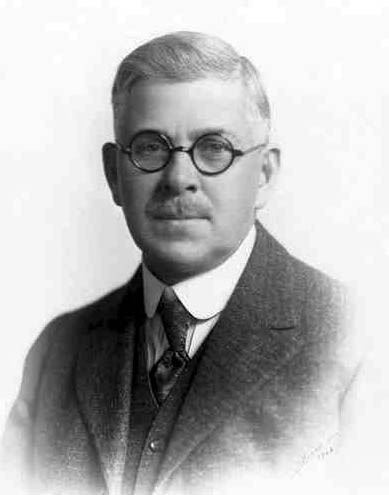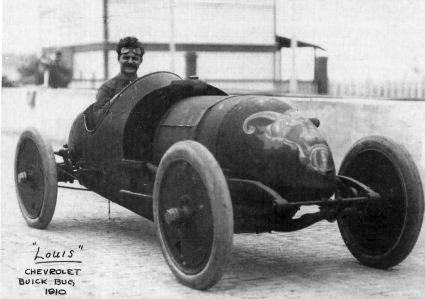|
Rover V8
The Rover V8 engine is a compact V8 engine, V8 internal combustion engine with aluminium cylinder block and cylinder heads, originally designed by General Motors Corporation, General Motors and later re-designed and produced by Rover (car), Rover in the United Kingdom. It has been used in a wide range of vehicles from Rover and other manufacturers since its British debut in 1967. History The Rover V8 began life as the Buick V8 engine#215, Buick 215, an all-aluminium OHV pushrod engine introduced in 1960 for the 1961 US model year (it was on their drawing boards in the late 1950s). The compact alloy engine was light, at just , and capable of high power outputs: the most powerful Buick version of this engine rated , and the very similar Oldsmobile "Jetfire" turbocharger, turbocharged version made , both numbers Horsepower#SAE gross power, SAE gross. Based on sales volume and press reports, the engine was a success. Buick produced 376,799 cars with this engine in just three years. A ... [...More Info...] [...Related Items...] OR: [Wikipedia] [Google] [Baidu] |
Buick V8 Engine
The Buick V8 is a family of V8 engines produced by the Buick division of General Motors between 1953 and 1981. The first version replaced the Buick straight-eight. Displacements vary from (for the division's unique all-aluminum early 1960s engine) to for its last big block in 1976. All are naturally aspirated OHV pushrod engines, except for an optional turbocharged version of the short-lived 215 used in the 1962-63 Oldsmobile Jetfire. Six displacements of the engine were used in two generations between 1953 and 1966, varying from to ; three displacements of standard cast-iron small blocks between 1964 and 1981, and and ; one of the aluminum blocks (1961-1963); and three big blocks between 1967 and 1976 and and . Some of these Buick V8s, such as the 350, 400, and 455, had the same displacements as those from other GM divisions, but were otherwise entirely different engines. Buick "Nailhead" V8 (first generation) Buick's first generation of V8 was offered from 1953 t ... [...More Info...] [...Related Items...] OR: [Wikipedia] [Google] [Baidu] |
Jetronic
Jetronic is a trade name of a manifold injection technology for automotive petrol engines, developed and marketed by Robert Bosch GmbH from the 1960s onwards. Bosch licensed the concept to many automobile manufacturers. There are several variations of the technology offering technological development and refinement. D-Jetronic (1967–1979) Analogue fuel injection, 'D' is from german: "Druck" meaning pressure. Inlet manifold vacuum is measured using a pressure sensor located in, or connected to the intake manifold, in order to calculate the duration of fuel injection pulses. Originally, this system was called Jetronic, but the name D-Jetronic was later created as a retronym A retronym is a newer name for an existing thing that helps differentiate the original form/version from a more recent one. It is thus a word or phrase created to avoid confusion between older and newer types, whereas previously (before there were ... to distinguish it from subsequent Jetronic iterations. D-J ... [...More Info...] [...Related Items...] OR: [Wikipedia] [Google] [Baidu] |
Radiator (engine Cooling)
Radiators are heat exchangers used for cooling internal combustion engines, mainly in automobiles but also in piston-engined aircraft, railway locomotives, motorcycles, stationary generating plant or any similar use of such an engine. Internal combustion engines are often cooled by circulating a liquid called ''engine coolant'' through the engine block, and cylinder head where it is heated, then through a radiator where it loses heat to the atmosphere, and then returned to the engine. Engine coolant is usually water-based, but may also be oil. It is common to employ a water pump to force the engine coolant to circulate, and also for an axial fan to force air through the radiator. Automobiles and motorcycles In automobiles and motorcycles with a liquid-cooled internal combustion engine, a radiator is connected to channels running through the engine and cylinder head, through which a liquid (coolant) is pumped. This liquid may be water (in climates where water is unlik ... [...More Info...] [...Related Items...] OR: [Wikipedia] [Google] [Baidu] |
Pontiac (automobile)
Pontiac or formally the Pontiac Motor Division of General Motors, was an American automobile brand owned, manufactured, and commercialized by General Motors. Introduced as a General Motors companion make program, companion make for GM's more expensive line of Oakland Motor Car Company, Oakland automobiles, Pontiac overtook Oakland in popularity and supplanted its parent brand entirely by 1933. Sold in the United States, Canada, and Mexico by GM, in the hierarchy of GM's five divisions, it was slotted above Chevrolet, but below Oldsmobile, Buick, and Cadillac. Starting with the 1959 models, marketing was focused on selling the lifestyle that the car's ownership promised rather than the car itself. By emphasizing its "Wide Track" design, it billed itself as the "performance" division of General Motors, which "built excitement." Facing financial problems and restructuring efforts, GM announced in 2008 financial crash, 2008 that it would follow the same path with Pontiac as it had ... [...More Info...] [...Related Items...] OR: [Wikipedia] [Google] [Baidu] |
Horsepower
Horsepower (hp) is a unit of measurement of power, or the rate at which work is done, usually in reference to the output of engines or motors. There are many different standards and types of horsepower. Two common definitions used today are the mechanical horsepower (or imperial horsepower), which is about 745.7 watts, and the metric horsepower, which is approximately 735.5 watts. The term was adopted in the late 18th century by Scottish engineer James Watt to compare the output of steam engines with the power of draft horses. It was later expanded to include the output power of other types of piston engines, as well as turbines, electric motors and other machinery. The definition of the unit varied among geographical regions. Most countries now use the SI unit watt for measurement of power. With the implementation of the EU Directive 80/181/EEC on 1 January 2010, the use of horsepower in the EU is permitted only as a supplementary unit. History The development of the stea ... [...More Info...] [...Related Items...] OR: [Wikipedia] [Google] [Baidu] |
Turbocharger
In an internal combustion engine, a turbocharger (often called a turbo) is a forced induction device that is powered by the flow of exhaust gases. It uses this energy to compress the intake gas, forcing more air into the engine in order to produce more power for a given displacement. The current categorisation is that a turbocharger is powered by the kinetic energy of the exhaust gasses, whereas a supercharger is mechanically powered (usually by a belt from the engine's crankshaft). However, up until the mid-20th century, a turbocharger was called a "turbosupercharger" and was considered a type of supercharger. History Prior to the invention of the turbocharger, |
Oldsmobile
Oldsmobile or formally the Oldsmobile Division of General Motors was a brand of American automobiles, produced for most of its existence by General Motors. Originally established as "Olds Motor Vehicle Company" by Ransom E. Olds in 1897, it produced over 35 million vehicles, including at least 14 million built at its Lansing, Michigan factory alone. During its time as a division of General Motors, Oldsmobile slotted into the middle of GM's five (passenger car) divisions (above Chevrolet and Pontiac, but below Buick and Cadillac), and was noted for several groundbreaking technologies and designs. Oldsmobile's sales peaked at over one million annually from 1983 to 1986, but by the 1990s the division faced growing competition from premium import brands, and sales steadily declined. When it shut down in 2004, Oldsmobile was the oldest surviving American automobile marque, and one of the oldest in the world, after Mercedes-Benz, Peugeot, Renault, Fiat, Opel, Autocar and Tatra (i ... [...More Info...] [...Related Items...] OR: [Wikipedia] [Google] [Baidu] |
Buick
Buick () is a division of the American automobile manufacturer General Motors (GM). Started by automotive pioneer David Dunbar Buick in 1899, it was among the first American marques of automobiles, and was the company that established General Motors in 1908. Before the establishment of General Motors, GM founder William C. Durant had served as Buick's general manager and major investor. In the North American market, Buick is a premium automobile brand, selling luxury vehicles positioned above GM's mainstream brands, while priced below the flagship luxury Cadillac division. Buick's current target demographic according to ''The Detroit News'' is "a successful executive with family." After securing its market position in the late 1930s, when junior companion brand Marquette and Cadillac junior brand LaSalle were discontinued, Buick was positioned as an upscale luxury car below the Cadillac. During this same time period, many manufacturers were introducing V8 engines in their ... [...More Info...] [...Related Items...] OR: [Wikipedia] [Google] [Baidu] |
General Motors Corporation
The General Motors Company (GM) is an American Multinational corporation, multinational Automotive industry, automotive manufacturing company headquartered in Detroit, Michigan, United States. It is the largest automaker in the United States and was the largest in the world for 77 years before losing the top spot to Toyota in 2008. General Motors operates manufacturing plants in eight countries. Its four core automobile brands are Chevrolet, Buick, GMC (automobile), GMC, and Cadillac. It also holds interests in Chinese brands Wuling Motors and Baojun as well as DMAX (engines), DMAX via joint ventures. Additionally, GM also owns the BrightDrop delivery vehicle manufacturer, GM Defense, a namesake Defense vehicles division which produces military vehicles for the United States government and military; the vehicle safety, security, and information services provider OnStar; the auto parts company ACDelco, a GM Financial, namesake financial lending service; and majority ownership in t ... [...More Info...] [...Related Items...] OR: [Wikipedia] [Google] [Baidu] |
Cylinder Head
In an internal combustion engine, the cylinder head (often abbreviated to simply "head") sits above the cylinders and forms the roof of the combustion chamber. In sidevalve engines, the head is a simple sheet of metal; whereas in more modern overhead valve and overhead camshaft engines, the cylinder head is a more complicated block often containing inlet and exhaust passages, coolant passages, valves, camshafts, spark plugs and fuel injectors. Most straight engines have a single cylinder head shared by all of the cylinders and most V engines have two cylinder heads (one per bank of cylinders). Design A summary of engine designs is shown below, in chronological order for automobile usage. Sidevalve engines In a flathead (''sidevalve'') engine, all of the valvetrain components are contained within the block, therefore the head is usually a simple sheet of metal bolted to the top of the engine block. Sidevalve engines were once universal in automobiles but are now lar ... [...More Info...] [...Related Items...] OR: [Wikipedia] [Google] [Baidu] |
Cylinder Block
In an internal combustion engine, the engine block is the structure which contains the cylinders and other components. In an early automotive engine, the engine block consisted of just the cylinder block, to which a separate crankcase was attached. Modern engine blocks typically have the crankcase integrated with the cylinder block as a single component. Engine blocks often also include elements such as coolant passages and oil galleries. The term "cylinder block" is often used interchangeably with "engine block", although technically, the block of a modern engine (i.e. multiple cylinders integrated with another component) would be classified as a monobloc. __TOC__ Construction The main structure of an engine typically consists of the cylinders, coolant passages, oil galleries, crankcase, and cylinder head(s). The first production engines of the 1880s to 1920s usually used separate components for each of these elements, which were bolted together during engine assembly. M ... [...More Info...] [...Related Items...] OR: [Wikipedia] [Google] [Baidu] |
Aluminium
Aluminium (aluminum in American and Canadian English) is a chemical element with the symbol Al and atomic number 13. Aluminium has a density lower than those of other common metals, at approximately one third that of steel. It has a great affinity towards oxygen, and forms a protective layer of oxide on the surface when exposed to air. Aluminium visually resembles silver, both in its color and in its great ability to reflect light. It is soft, non-magnetic and ductile. It has one stable isotope, 27Al; this isotope is very common, making aluminium the twelfth most common element in the Universe. The radioactivity of 26Al is used in radiodating. Chemically, aluminium is a post-transition metal in the boron group; as is common for the group, aluminium forms compounds primarily in the +3 oxidation state. The aluminium cation Al3+ is small and highly charged; as such, it is polarizing, and bonds aluminium forms tend towards covalency. The strong affinity tow ... [...More Info...] [...Related Items...] OR: [Wikipedia] [Google] [Baidu] |
%2C_left_side_view.jpg)








